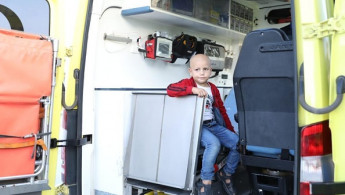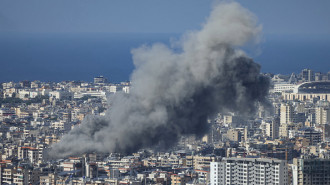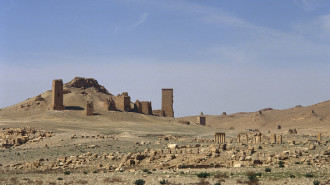Little water and scorching heat, skin diseases spread widely in Gaza
Ibrahim Al-Shaer, a six-year-old Palestinian boy, cries in pain continuously because a rash has spread across all over his body.
"From time to time, the child screams for help and begs us to get rid of the rash, but no one can help him because there is no medicine to relieve his pain," Fathia Abed, his mother, said to The New Arab.
Like most Palestinians, Fathia was displaced several times, and now has settled in a tent in the Mawasi area of Khan Younis city in the southern Gaza Strip.
The 45-year-old mother of eight children says, "The minimum requirements for human life are not available. We live on sand, which is often polluted due to the many displaced people. In addition, insects, cockroaches, and ants eat my children's bodies."
Not far from the tent of Fathia and her family of nine, piles of rubbish are piled up, a feast for thousands of insects, which have spread on and around it.
"Can you live here? Garbage surrounds us all the time, germs, and epidemics are ravaging my children's bodies, and I don't know how to get rid of this suffering, especially in the summer," Fathia adds.
In an attempt to alleviate her little child's pain, Fathia resorts to taking him to the sea to bathe in it, which may help treat the infection, since the seawater is salty and may act as a disinfectant.
The situation is not much different for a little girl, Haya Al-Rafati, from Gaza City. She suffers from the spread of pimples with white and blackheads all over her body, which prevents her from wearing any clothes.
"It hurts me a lot, and all the time I feel like I want to scratch my body until the blood comes out of those pimples […] I can't bear all this pain," the 12-year-old girl remarked to TNA. "I can't sleep, even for a minute."
Ibrahim and Haya are among an estimated 150,000 Palestinians who suffer from skin infections ranging from scabies, chickenpox, lice, impetigo, and other debilitating skin diseases, according to statistics issued by the Ministry of Health in Gaza.
Medical sources told TNA that the spread of skin diseases is driven by the unsanitary conditions that the displaced have been sheltered in since the beginning of the Israel's war.
The World Health Organization confirmed the presence of 96,417 cases of scabies and lice in the Gaza Strip since October 7, 9,274 cases of chickenpox, 60,130 cases of rash, and 10,038 cases of impetigo.
Scabies, chickenpox, and impetigo are particularly prevalent, according to pharmacist, Dr. Ragheb Abu Shaaban. Dr. Shaaban runs a temporary health unit that he established with a group of volunteers from the Palestinian medical staff through personal efforts in the Mawasi area of Khan Younis.
"You can see blisters and scabs on the hands, feet, backs, and stomachs of young men in the area," Abu Shaaban told TNA, adding that they receive about 100 cases every day.
Due to the shortage of medicines, the pharmacist resorts to rubbing his patients' bodies with calamine lotion to soothe their bodies and relieve the itching.
He explained that the skin diseases are caused by "the hot weather and the lack of clean water in particular," adding, "The impact is disastrous, especially on children."
The United Nations Relief and Works Agency for Palestine Refugees (UNRWA) reported that the number of displaced people in the Gaza Strip reached 1.9 million by March. The number is likely to have increased due to the numerous Israeli military attacks in southern Gaza since then.
The Israeli war on the Gaza Strip since 7 October has killed at least 38,193 people, most of them civilians, according to data from the health ministry.




 Follow the Middle East's top stories in English at The New Arab on Google News
Follow the Middle East's top stories in English at The New Arab on Google News


![A group of Palestinians, foreign and Israeli activists gather to participated in an olive picking event on the land in the town of Battir, which is under threat of confiscation by Israel in Bethlehem, occupied West Bank on 8 November 2024. [Getty]](/sites/default/files/styles/image_330x185/public/2182930803.jpeg?h=199d8c1f&itok=__0LgGsa)